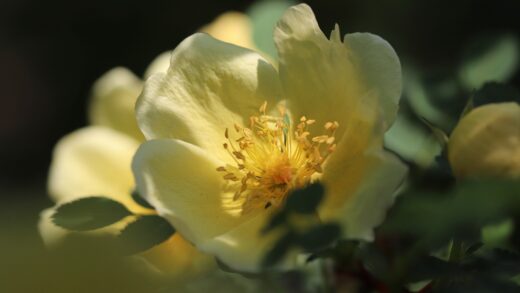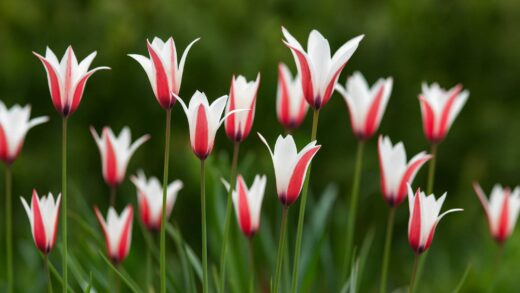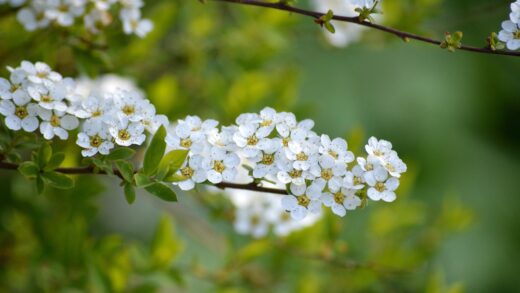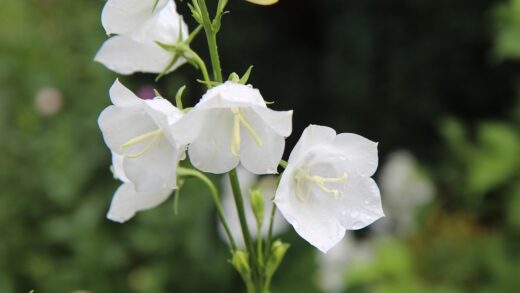The oleander, a beautiful ornament of Mediterranean gardens and terraces, can face numerous diseases and pests despite our best care. It is crucial to recognize the problem in time and take appropriate measures to save the plant. Prevention is key, as most troubles can be avoided by providing the right conditions for the plant. To do this, it is worth regularly checking the leaves, stems, and flowers to notice even the smallest signs. The oleander is a resilient plant, but excessive stress, improper watering, or inadequate nutrient supply weakens it and makes it more susceptible to diseases and pests.
Recognizing and managing pests
One of the most common pests of oleanders is the aphid. These small insects suck the plant’s sap from young shoots and the undersides of leaves, leading to leaf distortion, yellowing, and slowed growth. By regular inspection, especially around the shoots and buds, you can quickly spot the colonies. Mechanical control is recommended as a primary measure: you can wash the insects off with a strong stream of water or spray the plant with gentle solutions like soapy water.
Scale insects can also cause significant problems. These insects attach themselves to leaves and stems and protect themselves with a waxy shield, which makes them difficult to control. The sap-sucking by scale insects causes the leaves to discolor, slowly die, and the plant to weaken. You can also remove scale insects mechanically, for example with a soft cloth or toothbrush, and then make sure to spray the plant with a suitable insecticide, considering the stage under the shield.
Another common enemy of oleanders is the spider mite. These microscopic arachnids settle on the undersides of leaves and create a fine, web-like mesh. Spider mite feeding causes the leaves to be speckled with small, yellowish dots, then turn a bronze shade and fall off. To control spider mites, it is recommended to humidify the plant and use acaricides, especially in dry, warm weather when their population can increase explosively.
Last but not least, it is worth mentioning thrips, which cause damage to flowers and leaves. Thrips damage plant cells with their piercing-sucking mouthparts, causing silvery spots and distortions on the leaves, and the flower buds may also become deformed and unable to open properly. Both contact and systemic insecticides can be used to control thrips. It is also important to isolate infected plants to prevent the pests from spreading to other plants.
More articles on this topic
Fungal and bacterial diseases
Oleanders are often attacked by fungal diseases, one of the most common being leaf spot. Its symptoms are the appearance of dark, brownish spots on the leaves, which later die and fall off. The spread of the disease is aided by excessive moisture and poor air circulation. The basis of control is prevention: ensure proper ventilation and do not water the plant from above. In case of infection, the use of copper-based fungicides is recommended.
Oleander canker, a gall-forming disease caused by the bacterium Pseudomonas syringae, can also be a serious problem. Its signs are the appearance of irregularly shaped, swollen galls on the shoots, branches, and sometimes on the leaves. This disease enters the plant through wounds, so special care must be taken to use disinfected tools during pruning. Infected parts must be immediately removed and destroyed, as the disease is not curable.
Root rot is another serious fungal disease that primarily endangers plants in overwatered, poorly draining soil. Its symptom is that the plant’s leaves turn yellow, wilt, and the plant’s general condition deteriorates. As the disease progresses, the roots rot and the plant dies. To prevent this, provide well-draining soil and moderate watering, especially during the winter dormant period.
Anthracnose, another fungal disease, causes dark, sunken spots on the leaves and stems. The disease spreads in warm, humid conditions. Infected parts must be removed, and the plant should be treated with a fungicide. Prevention is also key here; excessive moisture in the plant’s environment should be avoided.
More articles on this topic
Problems arising from care mistakes
Yellowing and falling leaves of the oleander are often the result of improper watering. Overwatering can cause root rot, while lack of water results in stress and leaf desiccation. The oleander loves a lot of water, but the soil should not be constantly wet. It’s best to let the top layer of soil dry out between waterings, then water the plant thoroughly.
Nutrient deficiency can also be behind yellowing leaves. The oleander has high nutrient requirements, especially for nitrogen, potassium, and iron. Signs of iron deficiency are yellowing leaves with green veins (chlorosis). In this case, it is worth giving the plant an iron supplement and ensuring a regular supply of nutrients.
Browning of the leaf tips can also be a sign of dry air. The oleander is a Mediterranean plant, but container-grown plants are more sensitive to humidity. Especially in heated rooms, during wintering, it is important to increase the air humidity, for example with water trays around the plant. You can also regularly spray the plant with water, but be careful not to make the air too humid, as this can cause fungal diseases.
Improper pruning can also be a source of problems. Pruning too hard can stress the plant, while pruning too lightly can make the plant bushy and reduce flowering. Pruning is recommended after flowering, removing spent shoots and diseased, damaged parts. It is important to disinfect pruning tools before each use.
Prevention and control
From the perspective of maintaining the oleander’s health, prevention is the first and most important step. Proper placement is fundamental: the oleander loves a sunny, warm spot with good air circulation. Plants kept in crowded places are more prone to diseases. The ideal is to place the plant on a well-ventilated, south-facing terrace or in a garden.
Proper soil and nutrient supply are crucial. The oleander thrives in well-draining, nutrient-rich soil. From early spring to autumn, during the growing season, it is worth feeding it with a special oleander fertilizer solution that contains the necessary micro and macro elements. However, excessive nutrient supply can be harmful, so always follow the product’s instructions for use.
Regular inspection and hygiene are key. Regularly, at least once a week, examine the plant for signs of pests and diseases. Remove dry, diseased leaves and flowers to prevent the spread of infections. It is a good idea to seal wounds created during pruning with a wound-sealing agent.
If you do notice a problem, quick action is essential. Chemical control is only the last resort; always try biological or mechanical methods first. It is important to apply chemicals exactly as per the instructions and to spray in the evening to protect pollinating insects. Wear protective gear when working with chemicals.


















